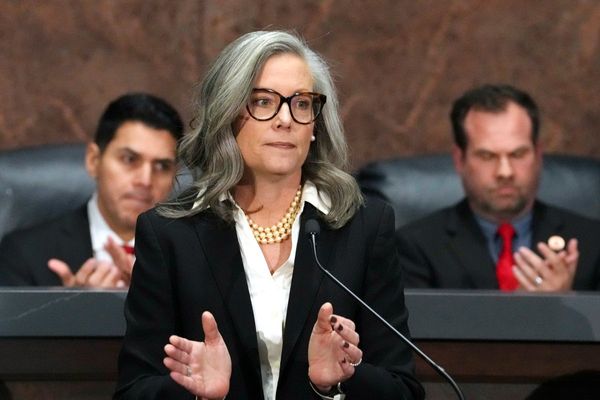
Rising prices and snarled supply chains are poised to blunt the impact of the $1 trillion infrastructure law Congress passed with bipartisan support last year.
How many roads, bridges, railways, fiber optic lines and other types of infrastructure the U.S. can build or fix under the law—a central accomplishment of President Biden’s that experts say is a generational investment—will largely hinge on the extent of increases in everything from the cost of diesel fuel to workers’ wages.
Elevated costs for materials and labor are already pushing contractors to charge more for construction projects, government data show, increases that economists and industry officials say could reduce the number of infrastructure projects the new federal money can finance. State and local officials facing higher prices may give priority to easier, less ambitious projects, and some worry that a rush of government spending could exacerbate inflation in the industry.
“As the cost of materials for these projects goes up, there are going to be fewer projects that you’re able to do," said Jim Tymon, executive director of the American Association of State Highway and Transportation Officials. “All of those factors are going to have an impact on just how far this influx of new federal funding is going to go in addressing our infrastructure problems."
The cost of construction projects for government rose 13% in January compared with a year earlier, according to supplier price information released by the Labor Department last week. The producer-price index also showed input prices for construction of highways and streets was up 20% from a year earlier, with steel mill products and plastic construction products up 113% and 35%, respectively, over a year. The price of gasoline and diesel fuel are each up more than 50%. Those cost increases well outpace consumer inflation, which advanced 7.5% in the past year, the fastest rate in four decades.
“The hit to the infrastructure world is even greater than it is to the broader economy," said Rick Geddes, founding director of Cornell University’s Program in Infrastructure Policy.
While experts expect that prices for construction materials will eventually moderate, wage gains could prove more enduring.
Average hourly wages in the construction industry rose roughly 5% in January compared with a year earlier, according to Labor Department data. The construction industry is still short about 100,000 workers compared with February 2020, and a U.S. Chamber of Commerce survey of construction contractors found in December that 91% of respondents had difficulty finding skilled workers. A persistent shortage of construction workers could lead to additional wage raises.
Some in the industry hope technological advancements, as well as new employment opportunities generated by the federal infrastructure spending, could mitigate the labor shortage. But Ken Simonson, the chief economist for the Associated General Contractors of America, said greater flexibility and rising wages at other jobs may limit the draw of new workers into the construction jobs, where workers need to be on site.
“I’m worried that the situation is not going to get better, it is only to get worse," he said. While still rising, construction workers’ hourly wages increased at a slightly slower pace than wages did for private-sector workers overall in the past year, according to Labor Department data. “That will make it harder to attract and retain workers," Mr. Simonson added.
Gordon Lansford, the chief executive of J.E. Dunn Construction Co., based in Kansas City, Mo., said the company recently aimed to staff a hospital construction project with 400 workers, but was only able to hire 300.
“It slows the pace of the project or requires overtime work, which obviously costs more and drives the cost of the project up," he said.
Of the roughly $1 trillion in spending authorized by the law, roughly $550 billion is above previously projected federal investments in infrastructure. Mr. Biden signed the bill into law in November, but much of that money is still tied up in Washington and is set to be spent over five years.
The higher prices may affect the decisions state and local governments make about how to spend the new federal money, economists said. If prices continue to rise, officials may prefer projects with shorter timelines—and therefore more certain costs—or projects that rely less on volatile commodities such as steel.
“There’s this hidden effect of inflation, which is that it should push you to choose projects that have less risk of delay and there’s more certainty of cost," said Leah Brooks, an economist in the public policy school at George Washington University. “Those are probably smaller projects."
In other cases, infrastructure officials will likely select projects based on need, meaning they would have to simply absorb the higher costs and longer timelines for the projects.
“If your bridge is breaking you have to fix the break, even if you’re waiting months for your components to come from Thailand," Ms. Brooks said.
Some contractors and experts say the new federal funding will heighten demand for scarce materials and labor, further pushing up prices. Others disagree, saying the multiyear payout of the funds will mute any effect they would have on costs.
“There will be an increase in demand for the materials, but it is spread out over time," said Alison Premo Black, senior vice president and chief economist at the American Road and Transportation Builders Association. “We know it’s coming."







